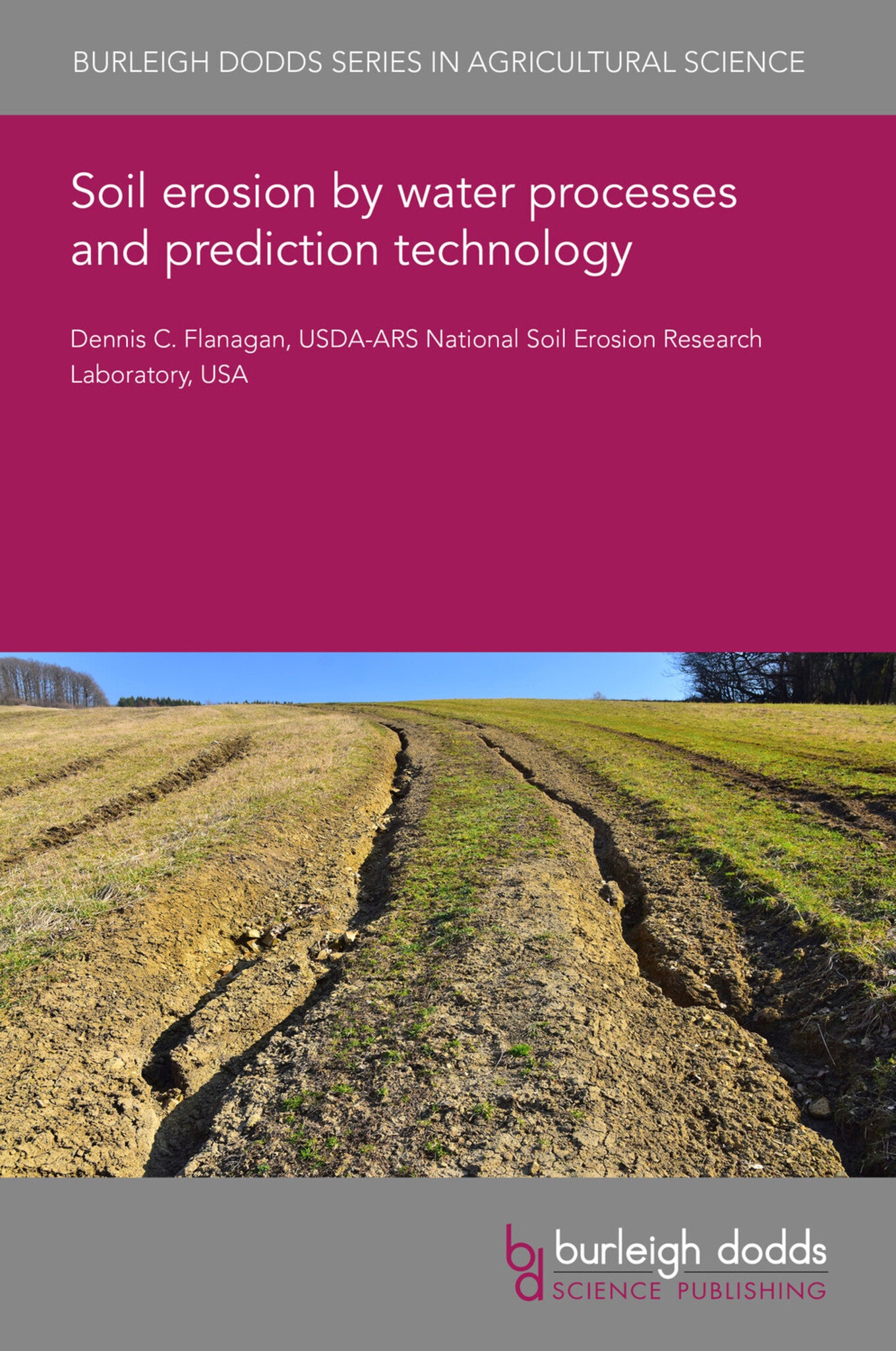We're sorry. An error has occurred
Please cancel or retry.
Soil erosion by water processes and prediction technology

Some error occured while loading the Quick View. Please close the Quick View and try reloading the page.
Couldn't load pickup availability
- Format:
-
21 August 2024

Soil erosion by water is a natural phenomenon that occurs on upland areas when soil is detached from a surface by impacting raindrops or by flowing water that exerts shear forces. This chapter will describe and discuss various soil erosion by water processes, particularly at agricultural field scale, and also elucidate current erosion process modeling technology and areas for future research. Multiple types of soil erosion by water can be described, usually with the dominant form changing as the scale of interest, including: 1.) Raindrop detachment, that includes splash erosion and rainfall-enhanced shallow flow transport, all of which are commonly called interrill erosion; 2.) Rill detachment, that can include headcut formation and advancement, excess flow shear erosion, sediment transport, sediment deposition in rill channels and/or divergent flow areas; 3.) Ephemeral gully erosion in concentrated flow channels, headcut formation and advancement, excess flow shear stress detachment, sediment transport, and sediment deposition.

TECHNOLOGY & ENGINEERING / Agriculture / Agronomy / Soil Science, Soil science and management, SCIENCE / Global Warming & Climate Change, SCIENCE / Environmental Science, TECHNOLOGY & ENGINEERING / Agriculture / Sustainable Agriculture, TECHNOLOGY & ENGINEERING / Environmental / General, TECHNOLOGY & ENGINEERING / Agriculture / Agronomy / Crop Science, Climate change, Sustainable agriculture, Agronomy and crop production, Organic farming

- 1 Introduction
- 2 Hillslope and field erosion processes
- 3 Associated processes affecting soil erosion
- 4 Process-based erosion by water prediction technology
- 5 Water Erosion Prediction Project (WEPP)
- 6 WEPP model interfaces and applications
- 7 Current and future WEPP model development
- 8 Conclusion
- 9 Where to look for further information
- 10 References



